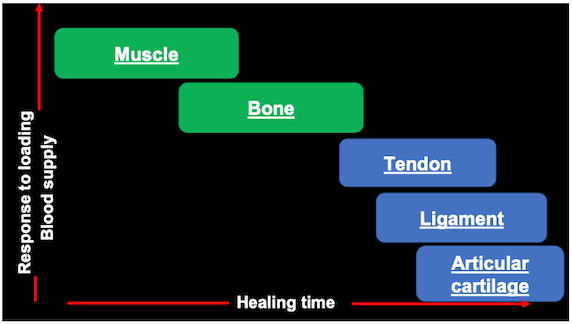How to Approach the Recovery Process
A successful runner is patient and proactive in the application of these self-guided pathways. The risk of injury is high when the process is rushed. Focus on each step as it comes so that you can return to running smarter and healthier than before.
Understanding Pain
The nature of pain is to catch our attention and protect us from danger, the brain often warning us before there is actual damage. Pain helps us understand our training errors and weaker areas, and thereby provides a direction in helping us adapt into better runners. Common chronic running injuries are a result of overuse, often from ignoring pain signals until there is a tissue breakdown. Therefore, it is important to listen to the pain.
Can I run through the pain?
Sometimes, yes, but it may also be necessary to take a break from your current training program. We will return to your performance goal(s), but first you must listen to your body, understand what is happening, and engage in the process of recovery. How long that will take depends on your application of ARC, your perception of pain, and how you manage stress, a healthy diet, and consistent sleep patterns. Throughout the ARC program, we will guide you in a safe return to running.
Stages of Healing
1. Inflammatory
Less than 3 Days. Marked by higher pain, this stage is usually characterized by swollenness or redness in the area as a result of the body sending local cells to treat the damaged tissue. Tissue is the most fragile at this stage, so more care is taken to protect and offload it. Continued movement is beneficial, but rehabilitative measures should be pursued while running volume and/or intensity is reduced.
2. Reparative
1-4 Weeks. Marked by moderate pain, this follows the inflammatory stage by bringing more cells to the injured, sensitive tissue. At this stage, the tissue is becoming more resilient, and can gradually take on more loads, which is necessary for healing. With dull pain, this stage may allow you to increase running volume, sometimes partnered with walking and/or cross training.
3. Remodeling
3-4 Weeks to Several Months. Marked by low to nonexistent pain, the tissue has been strengthened and can withstand more loading, such as more consistent running, with a low risk of injury. Nonetheless, training should follow a gradual progression to reduce the risk of re-injury.
A Note about Damaged Tissue
The type of tissue that is injured influences how long it takes to heal. If you remain static or immobile too long, the tissue will get even weaker due to loss of load, circulation, and adaptation. Hence, it is important to have some type of movement to keep the tissue healthy. As noted in the graph, you can see different tissue types have different rates of healing (i.e. the greater the blood supply, the faster the healing).
